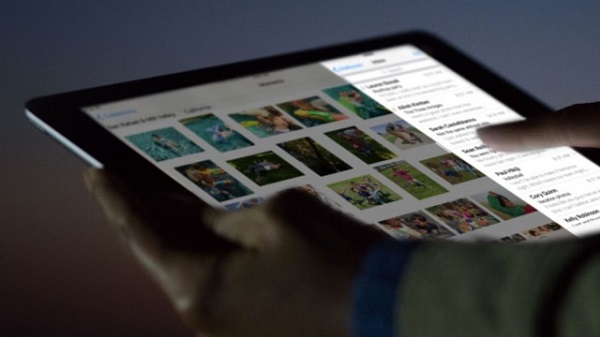Research
New LRC Study Evaluates the Effectiveness of Apple’s iPad Night Shift Application

| The light emitted by portable electronic devices (PEDs), particularly when used at night, has drawn a great deal of interest among sleep researchers, healthcare professionals, and the media. Research shows that exposure to light at night (LAN) may be associated with poor sleep and may lead to diminished alertness and performance throughout the day. Exposure to LAN can also acutely suppress melatonin, a hormone produced at night and in darkness, which tells the body it is nighttime. The short-wavelength “blue” light emitted by electronics can be especially disruptive to melatonin production, and the proximity to the eye when PEDs are in use only aggravates the threat to getting a good night’s sleep.In an effort to address this problem, in 2016 Apple Inc. released the Night Shift application for its line of PEDs, notably including the iPad, which in the third quarter of 2017 was the world’s most popular computer tablet and accounted for 25% of the year’s global tablet sales. The Night Shift mode permits users to change the screen’s color to “more warm” (i.e., less blue light) or “less warm” (i.e., more blue light), without necessarily changing its brightness. A new study from the Lighting Research Center (LRC) at Rensselaer Polytechnic Institute investigated the effectiveness of Night Shift for lessening the impacts of nighttime iPad use on melatonin suppression, a marker of the circadian system. The study, to be published in 2018 by the peer-reviewed journal Lighting Research & Technology, is currently in press and is now available to subscribers online.In the study, LRC researchers Rohan Nagare, Barbara Plitnick, and Mariana G. Figueiro recruited 12 young adults to view iPads between 11:00 p.m. and 1:00 a.m. on four separate nights under four experimental conditions. One of the study’s conditions deliberately suppressed participants’ melatonin levels by delivering a blue light intervention to the participants’ eyes via light-emitting diode (LED) goggles designed by the LRC. A second condition occurred in dim light (< 5 lux), where participants wore orange goggles that filtered blue light, which served as the control for the baseline melatonin suppression calculations. The study also used two spectrally distinct lighting interventions for the iPad that were generated by adjusting the ‘color temperature’ slide control of the device’s Night Shift application to either extreme of its more warm (2837 K) or less warm (5997 K) range. LRC researchers independently measured the correlated color temperature (CCT) of each Night Shift setting as part of the study. Participants exposed to the Night Shift Low CCT (more warm) and Night Shift High CCT (less warm) interventions wore lensless eyeglasses frames fitted with an LRC-developed circadian light meter called a Dimesimeter, which measured eye-level light exposures. Data from the Dimesimeter was used to calculate the circadian stimulus (CS) received by participants during the experiment. Using the LRC’s free, downloadable CS Calculator, LRC researchers were able to closely predict the amount of melatonin suppression that was recorded for the participants.Results showed that all three lighting interventions significantly suppressed melatonin over the two hours of each study night. More importantly, there was no significant difference between the effectiveness of the two Night Shift settings. For a two-hour exposure to the iPad, the LRC measured: – 23% melatonin suppression on regular settings (not using Night Shift; from previous Wood et al. study) -19% melatonin suppression while using Night Shift High CCT -12% melatonin suppression while using Night Shift Low CCT The study’s main takeaway is that changing screen color alone is insufficient for limiting the impact of PEDs on melatonin levels in the evening, and that screen brightness should also be reduced. Overall, the results of this LRC study may be useful for developers, manufacturers, and users of self-luminous electronic devices by emphasizing considerations other than light spectrum when designing and using display applications for health and wellbeing. In addition to spectral properties, LRC researchers recommend that users also consider lowering the amount of light emitted by PEDs by keeping light levels low, limiting the use of PEDs to one-hour sessions, and avoiding exposures starting at least two hours before bedtime. Better yet, LRC researchers recommend turning off PEDs at least two hours prior to desired bedtimes. Even if melatonin is not suppressed during this interval, these devices can be alerting to the brain and, as a result, can disrupt sleep. |
| About the Lighting Research Center The Lighting Research Center (LRC) at Rensselaer Polytechnic Institute is the world’s leading center for lighting research and education. Established in 1988 by the New York State Energy Research and Development Authority (NYSERDA), the LRC conducts research in light and human health, transportation lighting and safety, solid-state lighting, energy efficiency, and plant health. LRC lighting scientists with multidisciplinary expertise in research, technology, design, and human factors, collaborate with a global network of leading manufacturers and government agencies, developing innovative lighting solutions for projects that range from the Boeing 787 Dreamliner to U.S. Navy submarines to hospital neonatal intensive-care units. In 1990, the LRC became the first university research center to offer graduate degrees in lighting and today, offers a M.S. in lighting and a Ph.D. to educate future leaders in lighting. Learn more at www.lrc.rpi.edu.About Rensselaer Polytechnic Institute Founded in 1824, Rensselaer Polytechnic Institute is America’s first technological research university. Rensselaer encompasses five schools, 32 research centers, more than 145 academic programs, and a dynamic community made up of more than 7,900 students and more than 100,000 living alumni. Rensselaer faculty and alumni include more than 145 National Academy members, six members of the National Inventors Hall of Fame, six National Medal of Technology winners, five National Medal of Science winners, and a Nobel Prize winner in Physics. With nearly 200 years of experience advancing scientific and technological knowledge, Rensselaer remains focused on addressing global challenges with a spirit of ingenuity and collaboration. |
Post Views: 1,296
You may like
Click to comment

